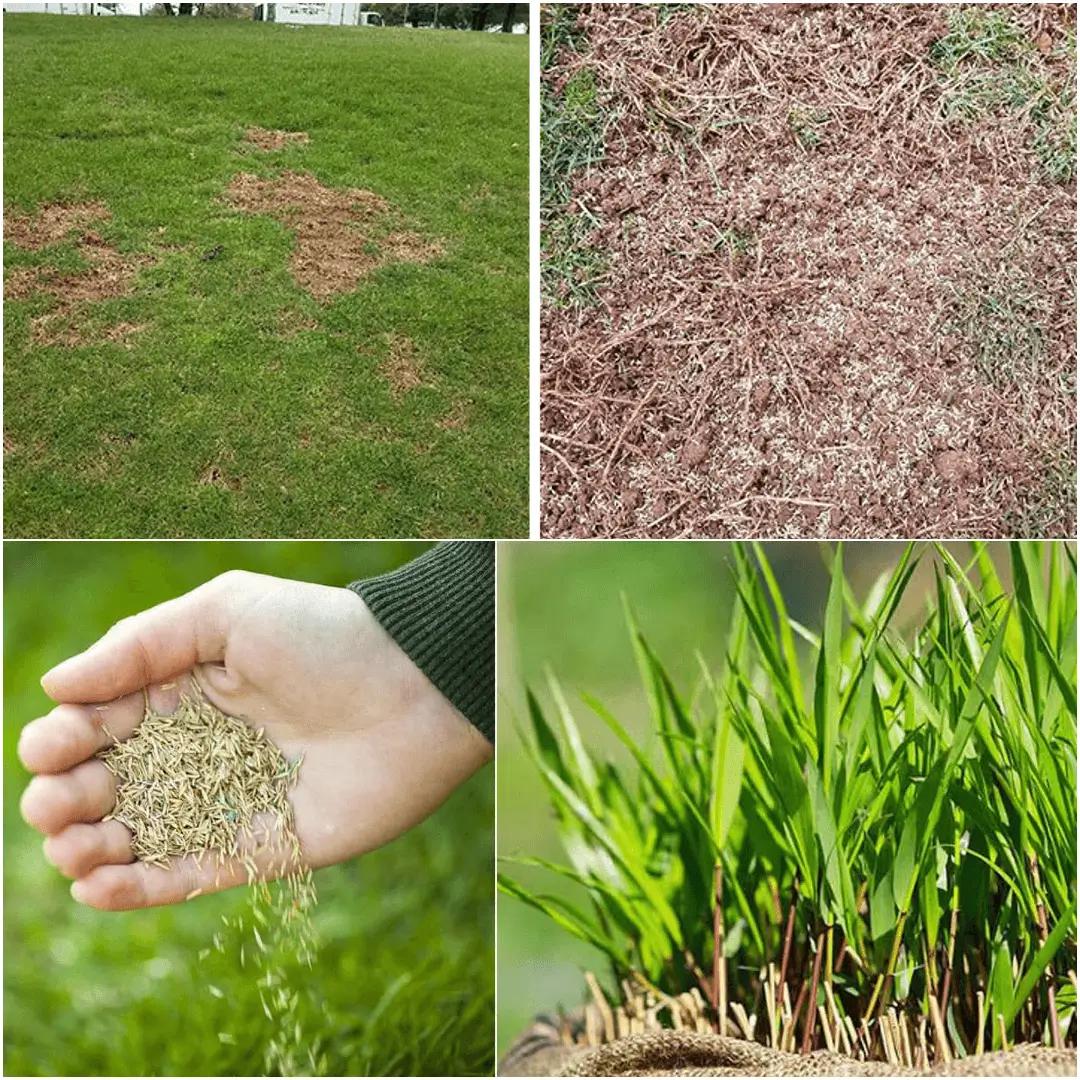Planting grass seed might seem simple, but getting that beautiful green lawn you dream of requires a bit more than just scattering some seeds. If you’re tired of patchy grass or bald spots, you’re in the right place. I’ll guide you step-by-step through the entire process of planting grass seed, so you can enjoy a lush, inviting lawn in no time.
Grass Types and Planting Time
Choosing the right grass for your region and planting at the right time are critical to success.
Cool-Season Grasses
Cool-season grasses like Kentucky bluegrass, tall fescue, and perennial ryegrass are best suited for cooler regions. These grasses thrive when temperatures are milder, making fall or early spring the ideal time to plant them.
Why? Cool-season grasses grow most actively when daytime temperatures range from 60 to 75°F. In regions like the northern U.S., early fall is perfect—the ground is warm enough for germination, but the cooler days and rainfall keep the seeds moist.
Warm-Season Grasses
For warmer regions, grasses like Bermudagrass, Zoysia, Bahiagrass, and Centipede grass are your best bet. These grasses need warmer soil to germinate, so planting in late spring to early summer, when temperatures are consistently above 80°F, ensures they get off to a strong start. Timing is key here—wait until after the last frost.
Preparing the Site for Seeding
Before you can plant, your lawn needs to be prepared. Think of it as giving your grass the best possible foundation.
Grading for Proper Drainage
Start by ensuring your lawn is graded properly. You want water to flow away from buildings, not pool around them. A slope of 1-2% is perfect for this. If your lawn has depressions, smooth them out, or you could end up with wet spots that lead to disease.
Removing Old Turf
If you’re replacing an old lawn, it’s essential to remove the old grass first. You can do this by using a sod cutter to pull up the turf or applying a non-selective herbicide. Whatever method you choose, make sure you clear the area thoroughly.
Preparing the Soil for Planting
Your soil is the foundation for healthy grass, and a little prep work can go a long way.
Testing Soil pH and Nutrient Levels
Grass thrives when the soil’s pH is between 6.0 and 7.5. To find out where your soil stands, get a soil testing kit. Once you know the pH, you can adjust it if needed. Acidic soil (too low pH)? Add lime. Alkaline soil (too high pH)? Sulfur is your fix.
Improving Soil Structure
For seeds to sprout, your soil needs good structure. If it’s too compact, water and air can’t reach the roots. Incorporate organic matter like compost to improve aeration and water retention. This simple step can make all the difference.
Choosing the Right Grass Seed
With so many grass seed options, it’s easy to feel overwhelmed. Here’s a tip: choose grass that suits your climate and lawn conditions.
Selecting Grass Seed for Your Climate
In cooler regions, go for cool-season grasses that stay green even in winter. In warmer climates, stick to warm-season varieties that thrive in the summer heat. Picking the right type is crucial to a lush, green lawn all year long.
Using Seed Mixes for Special Conditions
If your lawn has both sunny and shady areas, look for a mix designed for variable light conditions. Grass mixes like Pennington Smart Seed have specific blends for shaded lawns, which can make a big difference in patchy spots.
The Seeding Process
Now that the prep work is done, it’s time to plant those seeds.
Spreading Grass Seed Evenly
For even coverage, use a spreader. A drop spreader works well for smaller lawns since it allows for precision. For larger areas, a broadcast spreader is better as it fans out the seed over a wide area.
Raking and Rolling for Proper Seed Contact
Once you’ve spread the seed, lightly rake the surface to ensure the seeds are about ¼ inch deep. Don’t bury them too deep, though—grass seed needs light to germinate! After raking, use a lawn roller to ensure good seed-to-soil contact.
Watering and Nurturing the Seedlings
Watering is crucial in the early days after planting.
How to Water Grass Seed Correctly
Newly planted grass seed needs to stay moist, so water it 2-3 times a day with a light mist. Be careful not to overwater—if you see puddles, it’s time to stop. Once the grass begins to sprout, you can reduce watering to less frequent, but deeper sessions.
Managing Moisture Levels for Growth
As your grass grows, keep an eye on moisture levels. Overwatering can drown the seeds, while underwatering can dry them out. Finding the right balance will keep your lawn healthy and growing strong.
Grass Seed Germination and Early Care
Patience is key here, as grass seeds take time to germinate and establish.
Expected Germination Timeframes
Depending on the type of grass, germination can take anywhere from 5 to 21 days. Once your grass reaches 1 inch tall, it’s time to check for any bare spots and reseed if needed.
Spot-Checking for Bare Areas
Keep an eye out for patchy areas in your lawn. These spots can be reseeded by following the same steps you used for the initial planting.
Maintaining Your Lawn After Seeding
Once your grass is established, it’s time for regular care.
Mowing Your New Grass for the First Time
Wait until your grass reaches about 3 inches tall before you mow it for the first time. Make sure your mower blade is sharp, so it cuts cleanly rather than tearing the grass. Set your mower height to about 2.5 to 3 inches, which will encourage strong roots without stressing the young grass.
Protecting Young Grass from Foot Traffic
Your new lawn is fragile, especially during the first growing season. Avoid walking on it too much, and definitely keep pets and kids off it for the first few weeks. Foot traffic can compact the soil, damaging those delicate roots that are just starting to grow. If you must walk on it, try to spread out your steps to avoid damaging one specific area.
Fertilizing Your Grass for Optimal Growth
Once your grass is about 4-8 weeks old, it’s time to feed it. For cool-season grasses, fertilize right after that initial period. Warm-season grasses should be fertilized the following spring to give them a boost. Make sure you’re using a balanced fertilizer designed for lawns—too much nitrogen can burn your grass.
Congratulations! You’ve successfully planted your grass seed and taken the necessary steps to nurture it into a lush, green lawn. By understanding your grass type, preparing your soil, and giving those seeds the proper care, you’ve set your lawn up for long-term success. Remember, a healthy lawn doesn’t happen overnight—it’s a result of consistent care, the right timing, and patience. But with your efforts, you’ll soon be enjoying a gorgeous green yard that’s the envy of the neighborhood.
FAQs:
Do you plant grass seed on top or under soil?
Grass seed should be planted on top of the soil. After spreading the seed, lightly rake it into the top 1/4 inch of soil. Grass seed needs sunlight to germinate, so burying it too deep will prevent proper growth.
Do you need to cover grass seed?
Yes, lightly covering grass seed with a thin layer of soil or straw helps retain moisture and protects the seeds from being blown away or eaten by birds. However, don’t cover it too heavily, as grass seed needs sunlight to sprout.
What is the best time to plant grass seed?
The best time to plant grass seed depends on the type of grass. For cool-season grasses, early fall or spring is ideal when temperatures are cooler. For warm-season grasses, late spring to early summer is best when temperatures are consistently warm, around 80°F or higher.


